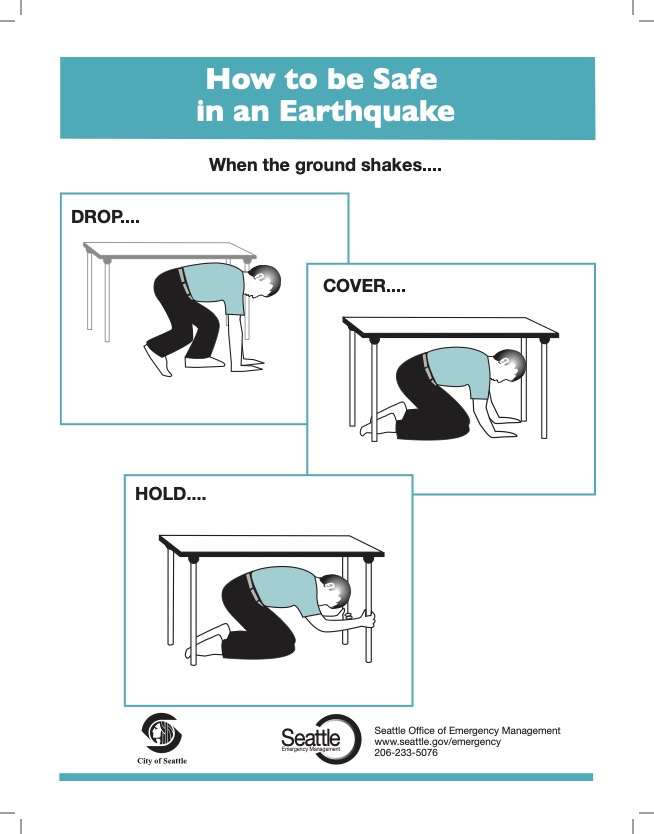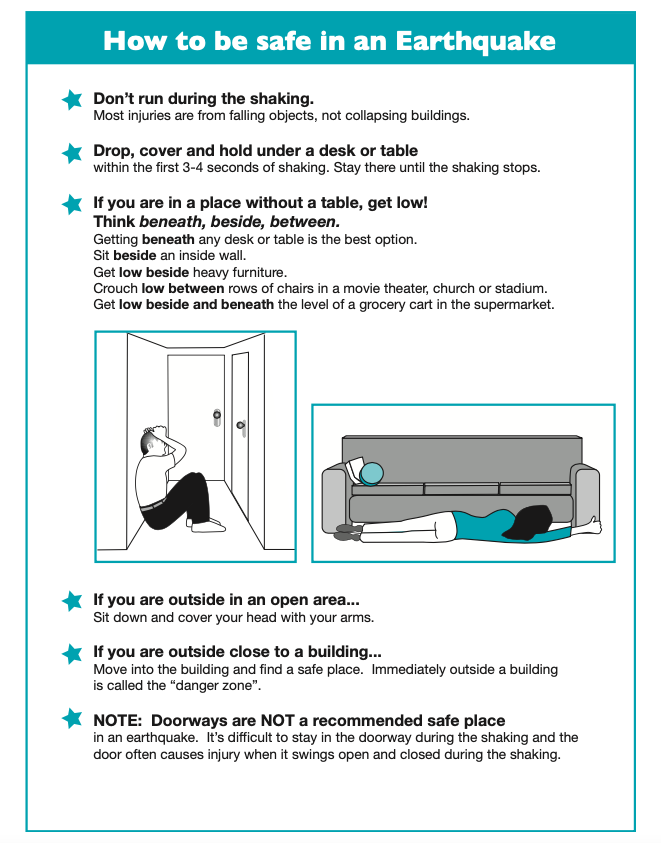The images of damage and the death toll from Turkey’s recent devastating earthquake are heart-wrenching. The February quake was a 7.8 in magnitude. And, oh my, in our area, experts predict we might see a quake in the Cascadia Subduction Zone measuring as high as 9.0.
Are you prepared?
It’s hard to wrap one’s head around the possibility that our Puget Sound area, and up and down the West Coast, could be this hard hit, including waves of aftershocks and, in some places, tsunamis. Yes, our urban building codes tend to be higher than those in Turkey and Syria, taken seriously and adhered to. We have city and state departments actively preparing to prevent and respond to the likelihood of structures collapsing and emergency responders being overwhelmed.
Did you know these agencies regularly remind us of the need to seriously prepare at the neighborhood level, and they provide a variety of resources to do so? Our boots-on-the-ground citizens’ work is to begin to regularly come together as immediate neighbors, block by block, and in our wider neighborhood community to help each other prepare and learn to take care of each other when a disaster strikes.

In Madison Park, a volunteer neighborhood emergency hub group came together over the last decade, steadily working to get foundational systems and supplies in place at a designated spot near the tennis courts in the park. This is where volunteers will coordinate communications and the sharing of information, skills, and resources after a major disaster. This initial preparation and education work has included some annual practice drills in the park in coordination with city-wide efforts you may have participated in. As those first volunteers moved on to other things in their lives, another pod of volunteers has come together to build on their work, further refining preparation efforts, learning from other neighborhood hub leaders, who’ve helped us host drills and educate our wider neighborhood. We’ve partnered a bit with the Madison Valley and Capitol Hill volunteers as they set up their hoods’ emergency communication hub locations and drills. These efforts always need new volunteers rotating in before existing ones move on. Did you know you can join us at any time?
Current Madison Park volunteer efforts include building partnerships with shops and merchants in the Madison Park village. As you frequent these establishments, ask if they have any of our “DID YOU KNOW” flyers with ongoing tips on how to get prepared. This month, keeping those horrific images from Turkey and Syria in mind, ask yourself, are you knowledgeable and adequately prepared?
Do you know how to stay safe?
When you sense the beginning of an earthquake shake, immediately drop, cover and hold on. Safety during an earthquake depends on quickly getting into action by getting low to the ground and protecting your head — make sure it is not the tallest thing in the room! If you are in bed, you may have to roll on your stomach and quickly cover your head. Contrary to popular thought, do not run to a doorway, but instead, quickly get under a table or wedge yourself beside an inside wall or piece of heavy furniture. Stay away from any areas with glass that might break and fly around.

A city poster reminds us:
• When the earth shakes, DROP to the ground, take COVER under a desk or table and HOLD on to the desk or table so it doesn't bounce away.
• Stay there until the shaking stops.
As a household, consider creating some fun ways to practice putting these guidelines into action. Perhaps you could designate a day of the month to practice in different parts of your living space. With children, you might create a game with a code word or gesture that stands for the arrival of shaking so everyone can practice quickly finding a safe place to be, remembering to drop, cover and hold on to something. Be adventurous and try this when you have company over.
To further prepare, you can research online tips for how to stay safe in a car when an earthquake hits. This involves pulling over immediately, preferably not under anything that might collapse or fall on you. Set your parking brake, turn on emergency blinkers and keep your seatbelt fastened. Only move if things appear safe, and proceed with great caution. For more information, visit “How to Survive an Earthquake in Your Car (with Pictures)” at wikiHow.
Children, pets and many adults tend to panic when they encounter something dangerous. Be prepared by having a little mantra, lullaby or comfort ritual that reassures and promotes calming thoughts. You may already have something like this in your repertoire of small ways to respond to stress or anxiety. Did you know that neurologically speaking, repetition of familiar little phrases of reassurance can reduce fear and calm the mind by regulating brain chemicals to block stress hormones and release endorphins. Likewise, the practice of stopping to concentrate on taking three deep breaths will help reset the brain for self-calming.
We often focus on emergency preparation as a gathering of supplies you might immediately need for first aid, warmth and hydration, but did you know that preparing for emergencies also involves preparing your mind to stay calm and knowing the immediate actions to take to stay safe?
Keep an eye out for more tips from your Madison Park Emergency Preparation Volunteer Team as we post flyers around the neighborhood and on NextDoor. To participate in our revived NextDoor conversation group about emergency preparations, go to News Feed — Nextdoor.
To join our preparation activities, contact us at madparkhub@gmail.com. Active volunteers have access to a range of educational materials on our Google Drive.